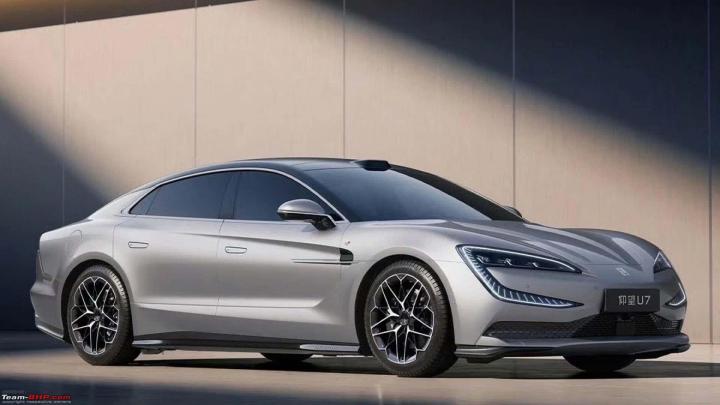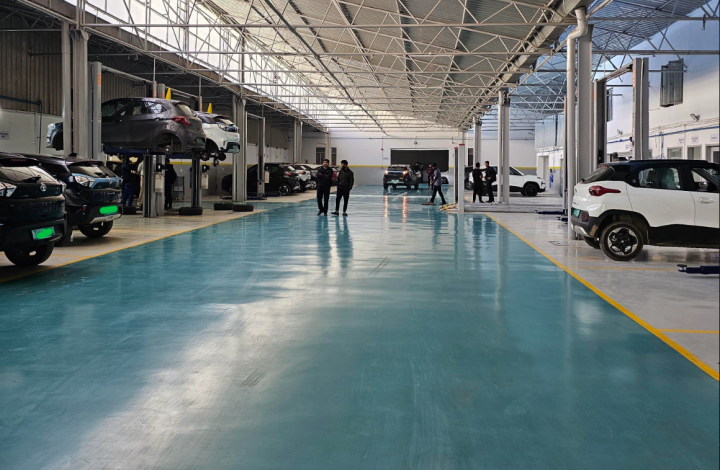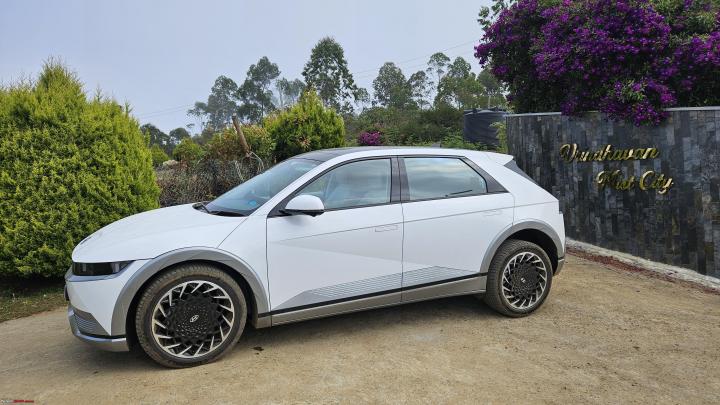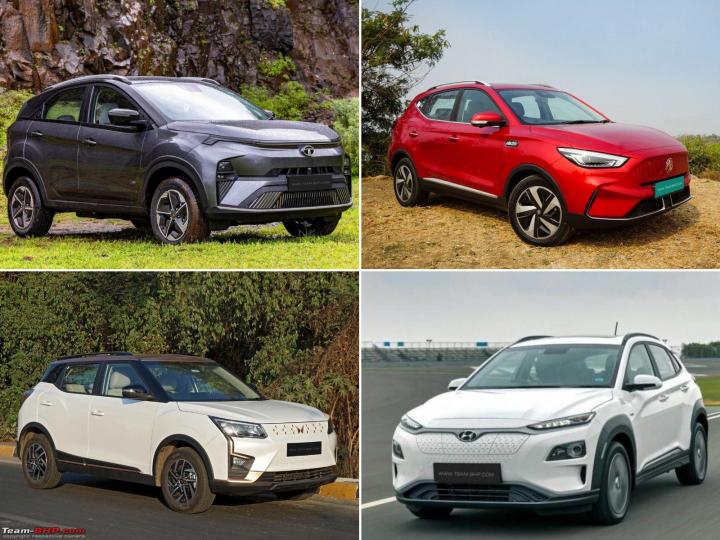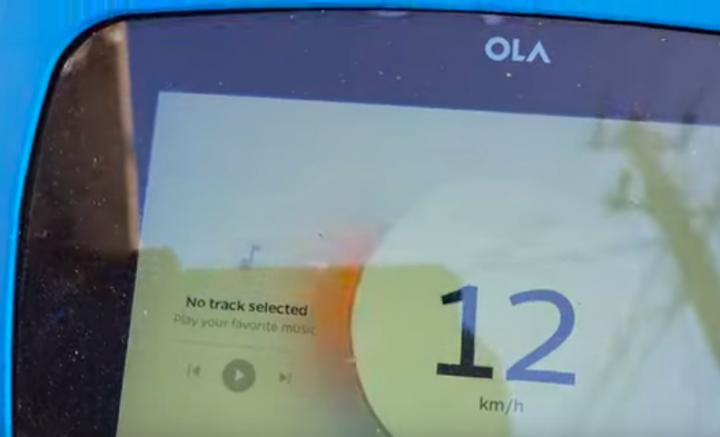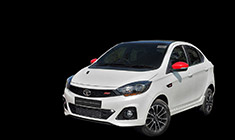News
My experience using Tesla Supercharger to charge my Model 3 Performance
Using the 250 kWh DC supercharger, my electric vehicle went from 15 to 65% in roughly 17-18 minutes.
BHPian mobike008 recently shared this with other enthusiasts.
Super Charging Experience
Yesterday, we reached the supercharger in Surrey, Canada at 10:00 pm. Imagine my surprise, each and every stall was full. We had to wait for 10 minutes to get our turn. Battery was at 15% and I needed juice to reach home. I decided to charge the battery to 65% so it's enough to get home.
15% to 65% : 50% juice was added in roughly 17-18 mins from this 250kwh DC supercharger.
I think that's not a bad pit-stop to re-fuel… err… re-juice the battery. What say?
Overall Cost : $8 Canadian which is $6 USD. Gosh, this is a little worse than "Free".
Look at the stalls. All full.
Enjoying some music videos while we wait.
Supercharging Cost. El Cheapo
Check out BHPian comments for more insights and information.
News
BYD cars & SUVs: A detailed look at the EV maker's global portfolio
After achieving tremendous success in their home market, BYD is on a global expansion spree and has experienced success to various degrees.
BHPian Kevinrevvz recently shared this with other enthusiasts.
Introduction:
BYD is one of the most mysterious brands to enter India in recent times where their legacy and background is unknown to most. In fact, BYD themselves don’t have a website displaying their global portfolio in a single space. However, they have been making serious headwinds in their global expansion and are rapidly breaking down apprehensions about buying Chinese Products. Let’s take a deep dive into BYD’s legacy and their current global lineup.
Who is BYD?
BYD is one of the more recent companies in the grand scheme of things. Its founder, Wang Chuanfu noticed an impending rise in demand for batteries around the world and wanted to steal the thunder from the Japanese as electronic giants. Soon enough, he established the company in Shenzhen in 1995 and went to become one of the world’s largest battery makers in just around half a decade by ingenious utilisation of China’s cheap labour costs and manufacturing prowess. Till date more than half of the consumer electronics we use are powered by BYD batteries.
While BYD experienced success in several fields of electronics they entered into, in 2003 they acquired Qinchuan Auto and began their foray into the automobile industry. They introduced their first car, the F3 in 2005 followed by the first PHEV, F3 DM in 2008 and the first BEV in 2009, the E6. Although their initial offerings were average at best with heavily Toyota inspired designs, they soon began to use their experience in electronics to develop really advanced new energy vehicles and began transitioning into original designs. Today, they stand as the world’s number one new energy vehicle manufacturer and number two electric vehicle manufacturer.
The amusing history behind the name:
While most of us know BYD as “Build Your Dreams”, that’s far from the name they started with. The company was initially called “Yadi Electronics” based on the street the company was based on. This left them at a disadvantage as they appeared towards the end on trade shows arranged in alphabetic order. Thus they added a prefix “B” to be called “Biyadi” or “BYD” when simplified into English. They later back-formed the expansion “Build Your Dreams” as they grew and gained more international clients.
Today’s Lineup:
Today, BYD has a massive portfolio of vehicles in their home market from $10,000 to $230,000 while a few of them are sold globally. While all of BYD’s vehicles features class leading powertrains at their respective price points, the luxury quotient and material quality drastically varies across their lineup from Average i.e. E6 to German luxury car level i.e. SEAL to Ultra luxury segment level i.e. YangWang.
While BYD position themselves as a pure BEV marque abroad, they sell an equal amount of PHEVs in their home market. Their BEVs are offered with several competent battery and motor combos at very value for money price points leading them to gain significant traction in all markets.
Their PHEVs called “DM-i” or “DM-p” are very different to global PHEVs wherein they’re EV first and offer a very large battery pack from around 15-49kWh usually paired to a 1.5L Turbo Petrol Engine mostly used as a range extender, combined to produce upto 1200hp (yes you read that right).
BYD comprises of 4 sub-brands namely, BYD (core), Denza (luxury), YangWang (ultra luxury) and FangChengBao (adventure).
Blade Battery:
The LFP Blade Battery is the single defining factor of all BYD vehicles. While other OEMs opt for NMC chemistry for better power density, BYD sticks to LFP even for their largest batteries. LFPs tend to perform better in warmer climates like ours and have a far longer shelf life with less degradation. They can also be charged to 100% regularly which is detrimental to traditional NMC batteries. BYD’s LFP cells are arranged in thin strips called blades. This setup leads to much better thermal efficiency and safety and even pass the famed nail penetration test. These factors combine to ensure that BYD Blade Batteries are some of the most efficient, safe, usable and longest lasting batteries in the world. Multiple OEMs around the globe buy BYD batteries for their cars.
BYD:
Under the BYD brand there are 3 series of cars such as the E Series (commercial), Dynasty Series (core) and Ocean Series (modern/global). Different models slot in at different levels of premium-ness ranging from “commercial”, “mainstream”, “premium” and “luxury”.
E Series:
These are pure electric, back to basics products meant for commercial use and are well known for their reliability and longevity. They often offer a warranty unheard of in the industry to the tone of 500,000Km.
E2 (BEV), From $12,000
Compact Commercial Hatchback

E3 (BEV), From $12,000
Compact Commercial Sedan, based on the E2
 \
\
E6 (BEV), From $18,000
Mid Size Commercial MPV, watered down version of the BYD Song Max
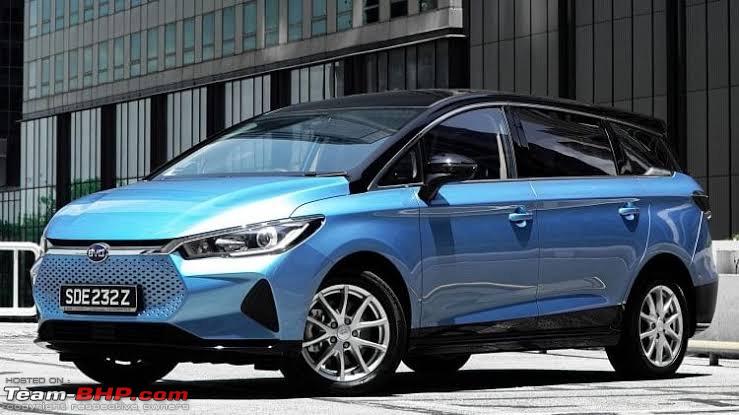
E9 (BEV), From $28,000
Executive Commercial Sedan, watered down version of the BYD Han
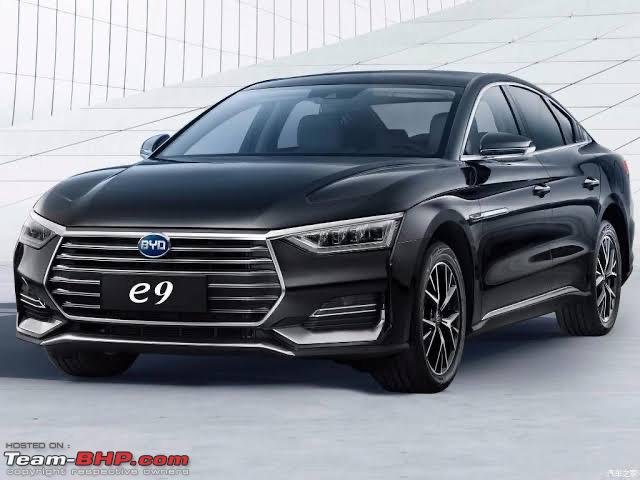
Dynasty Series:
These comprise of the core model lineup of BYD and are the best selling models. They are named after several dynasties from China’s vast and rich history. These range from basic mainstream cars such as Qin to truly luxurious, high quality products such as the Han and Tang.
Qin (BEV), From $12,000
Mainstream Compact Sedan, one of China’s best selling vehicles
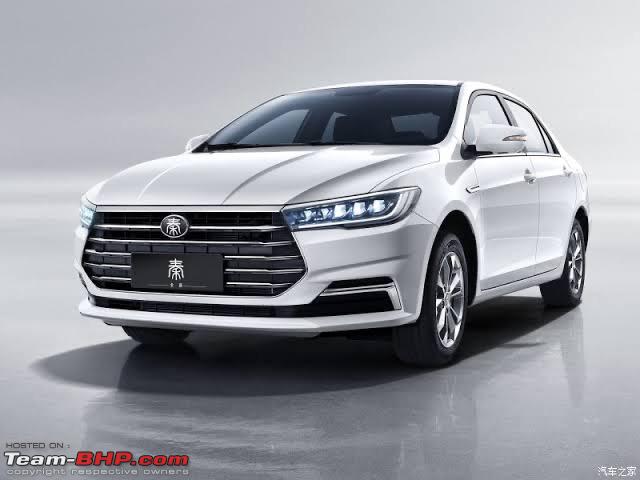
Qin Plus (BEV/PHEV), From $15,000
Premium Compact Sedan
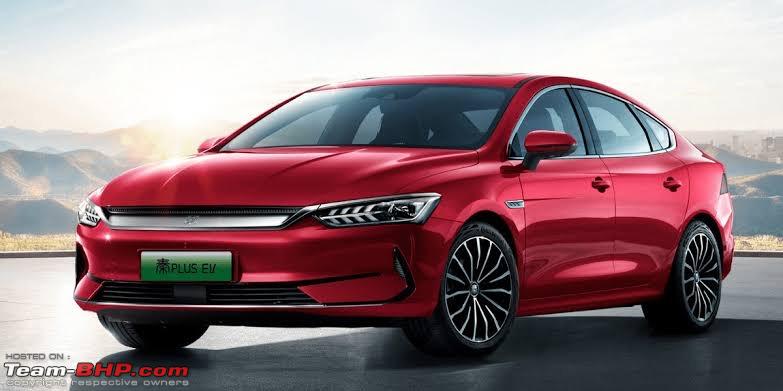
Tang (BEV/PHEV), From $35,000
Luxury Large SUV, sold in Europe as well.
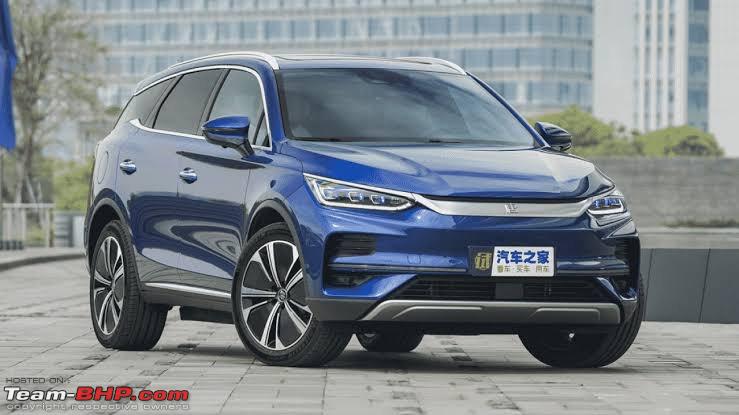
Song Pro (BEV/PHEV), From $15,000
Mainstream Compact SUV
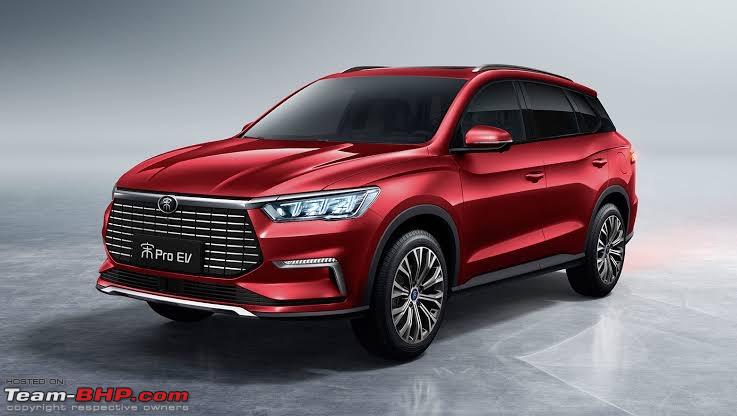
Song Plus or Seal U (BEV-E Platform 3.0), From $23,000
Premium Compact SUV
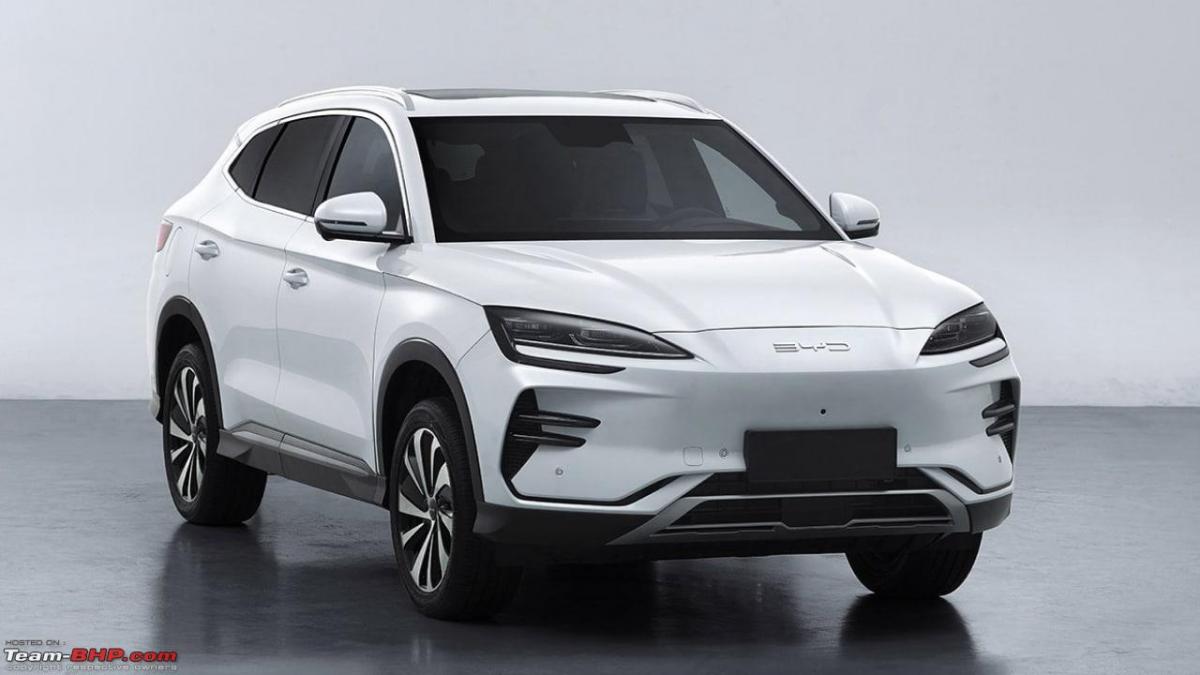
Sold as the Seal-U abroad but not to be confused with the Seal Sedan which is a completely different, significantly more upmarket product.
Song L (BEV-E Platform 3.0), From $27,000
Luxury Coupe SUV
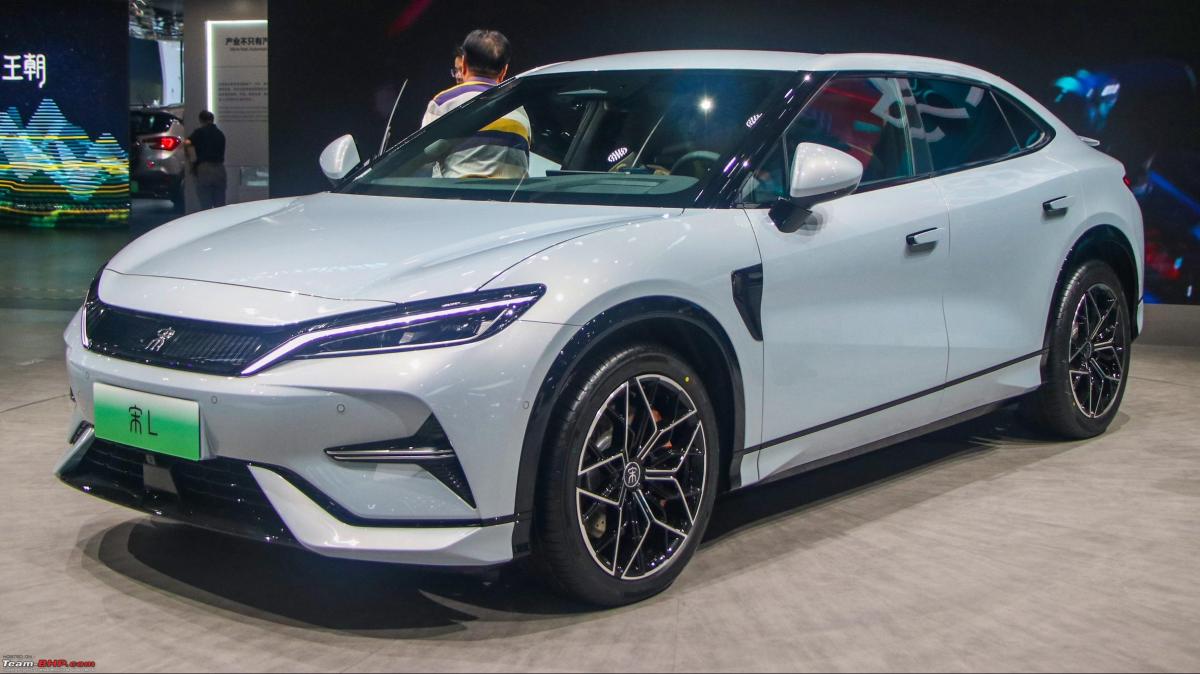
Song Max (BEV/PHEV), From $20,000
Premium MPV, more upmarket version of the BYD E6.

Han (BEV/PHEV), From $30,000
Luxury Large Executive Sedan, sold in Europe as well.
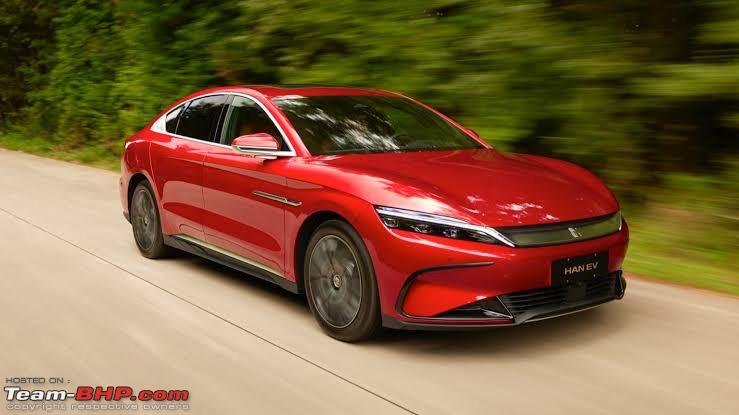
Yuan Pro (BEV), From $13,000
Mainstream Subcompact SUV
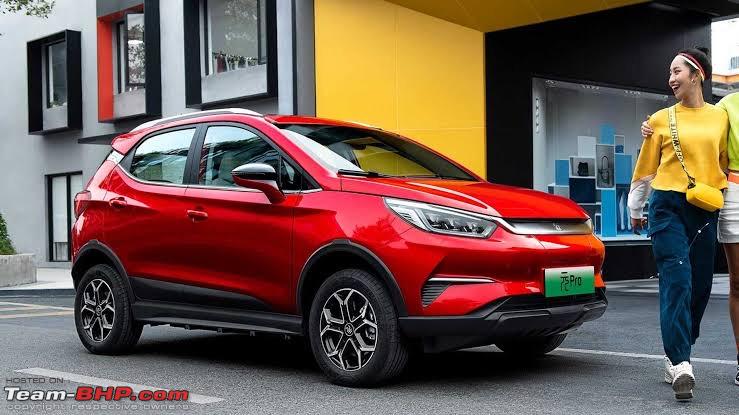
Yuan Up (BEV), From $16,000
Premium Subcompact SUV

Yuan Plus or Atto 3 (BEV-E Platform 3.0), From $17,000
Premium Compact SUV, sold as the Atto 3 abroad with considerable success.

Ocean Series:
These comprise of BYD’s modern take on cars with upmarket Ocean inspired designs. Most of these are aimed at the global market and have experienced success in South East Asia, Australia, New Zealand as well as UK and Europe.
Seagull or Dolphin Mini (BEV-E Platform 3.0), From $10,000
Mainstream Subcompact Hatchback
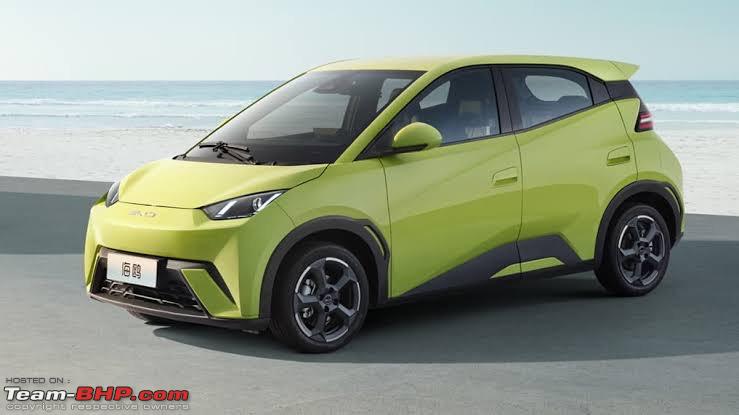
One of the entry level models of BYD that provides significant value for money and is slated to be the world’s first car featuring a Sodium-ion battery pack. Sold as the Dolphin Mini abroad.
Dolphin (BEV-E Platform 3.0), From $14,000
Premium Compact Hatchback

One of the most popular models which is a more compact version of the Atto 3 featuring the same battery and motor options.
Seal (BEV-E Platform 3.0-Cell to Body), From $26,000
Luxury Mid Size Sports Sedan

BYD is betting large on this car for their global success. This car was solely designed to beat the Tesla Model 3 at their own game with a much more upmarket build and material quality, high performance as well as very potent chassis dynamics (a trait not common in other BYDs or Chinese chars).
Sea Lion 07 (BEV-E Platform 3.0-Cell to Body), From $28,000
Luxury Mid Size Sports SUV
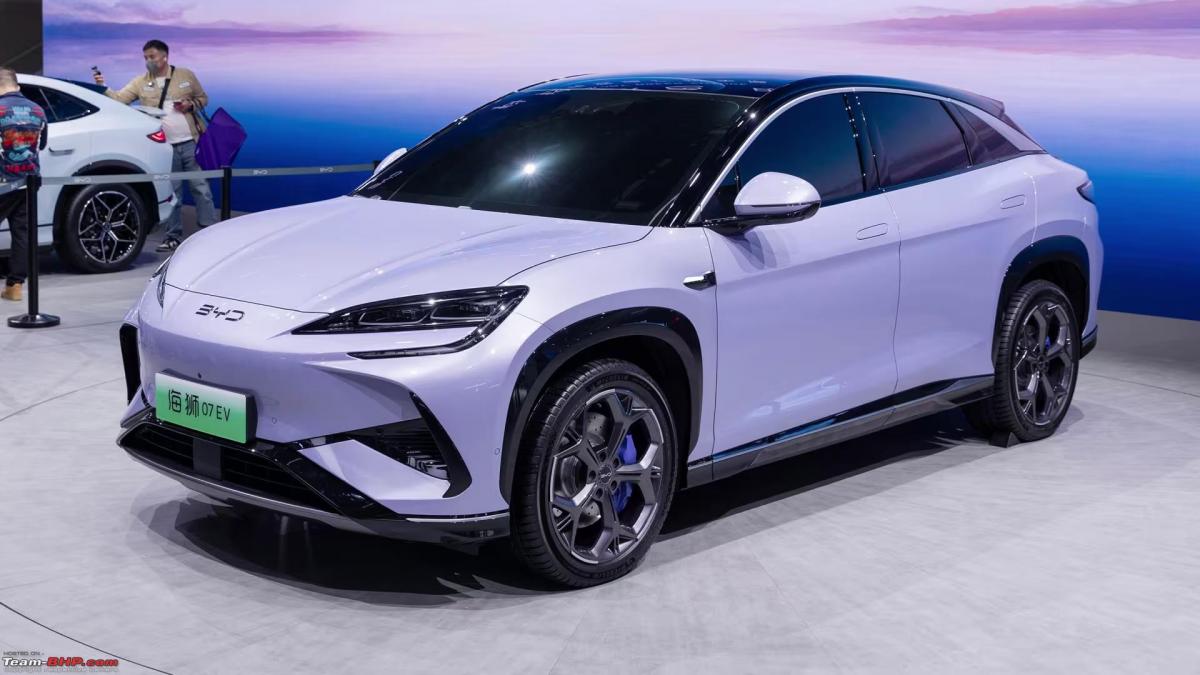
The SUV version of the BYD Seal featuring the same platform and powertrain options.
Destroyer 05 or Chazor or King (PHEV), From $17,000
Premium Compact Sedan, sold as the Chazor or King abroad.
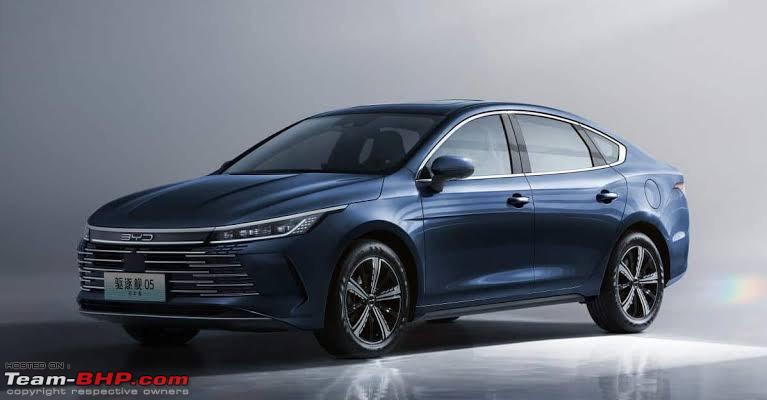
Seal DM-i originally Destroyer 07 (PHEV), From $22,000
Luxury Mid Size Sedan

Not to be confused with the Seal BEV as they are completely unrelated. The Destroyer 07 was renamed to the Seal DM-i at the last minute owing to the success of the Seal BEV nameplate.
Frigate 07 (PHEV), From $29,000
Luxury Mid Size SUV
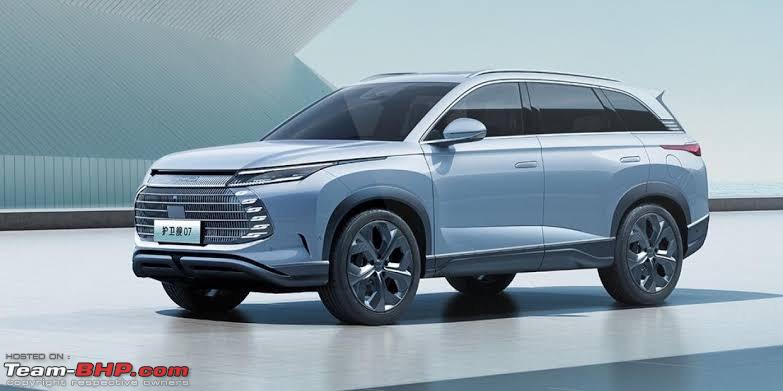
Denza:
Denza was a 50-50 venture between BYD and Mercedes Benz in an attempt to establish a new luxury brand. Daimler AG lowered their stake to provide BYD the reigns since 2021.
N7 (BEV-E Platform 3.0), From $42,000
Luxury Mid Size SUV
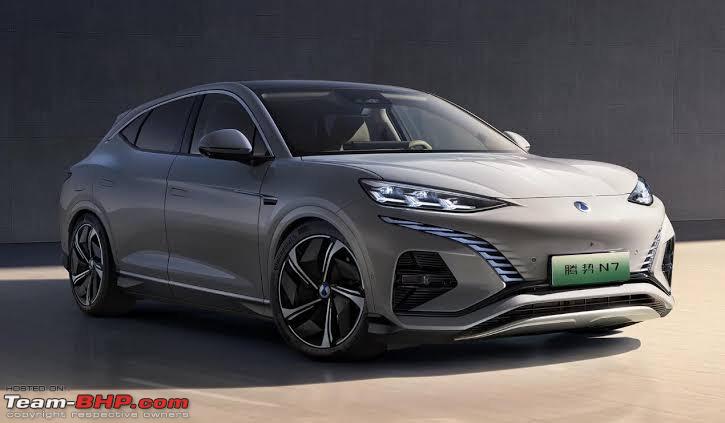
N8 (PHEV), From $45,000
Luxury Mid Size SUV
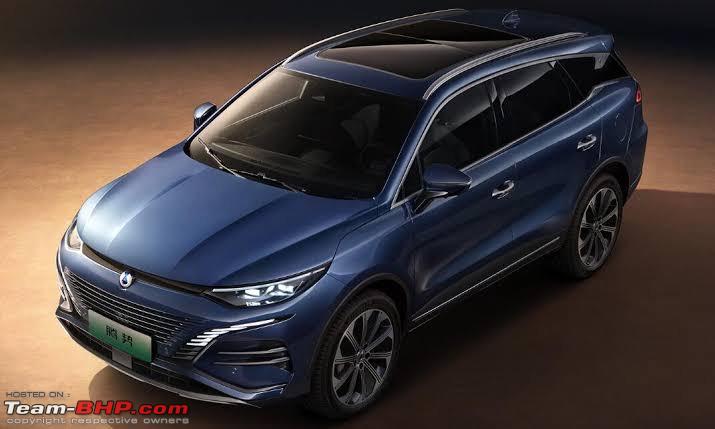
D9 (BEV/PHEV), From $47,000
Luxury Large MPV
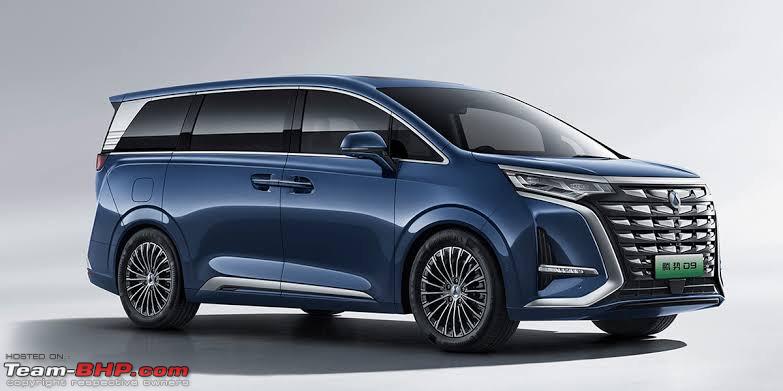
YangWang:
YangWang was recently established as a technology showcase for BYD and to compete with ultra high end brands such as Lamborghini and Bentley. They all feature the E4 platform with 4 electric motors producing around 1200hp and feature the BYD DiSus series of advanced suspension that is capable of making the car jump from a standstill, extending ground clearance to a very high degree for off roading or provide a magic carpet ride with active road monitoring.
U7 (BEV-E4), From $140,000
Ultra Luxury Full Size Sedan
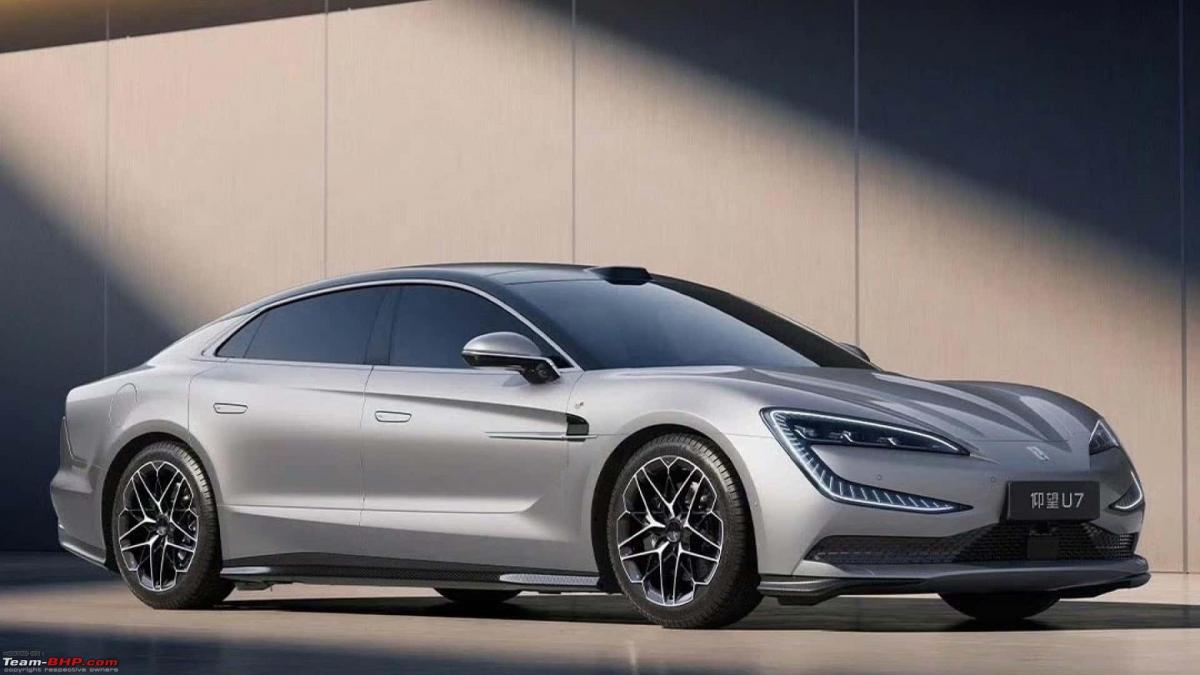
This is built to compete with the likes of Maybach S Class, EQS, Lucid Air and Model S. Highlights are the 135kWh LFP Blade battery, 1300hp Quad Motor Setup and a very low drag coefficient of 0.195 facilitating a claimed range of 800Km.
U8 (PHEV-E4), From $153,000
Ultra Luxury Full Size SUV

This is built to be the ultimate off-roader to compete with the likes of the Defender and G Wagon. Highlights are the 49kWh battery paired to a 1.5T range extender that combine to produce 1200hp and a claimed range of 1000Km.
It features industry first capabilities such as water sailing (not to be confused with water wading), where it can literally transform into a boat, float by vacuum sealing the chassis and sail across a water body. It can also rotate from a standstill, making a tank turn by rotating the wheels on either side on opposite directions. It can also be optioned with a DJI drone that is stored in the roof and can follow you along an off road trail transmitting the live feed to the infotainment system. The drone enclosure can also automatically swap batteries.
This car is truly out of a sci-fi movie!
U9 (BEV-E4), From $233,000
Ultra Luxury Supercar

This is supposed to compete with the likes of Lamborghini, Ferrari and McLaren. It features a quad motor powertrain producing 1300hp paired to a 80kWh LFP Blade battery facilitating a claimed range of 450km.
FangChengBao:
FangChengBao is an adventure or lifestyle oriented sub-brand.
Bao 5 (PHEV), From $37,000
Luxury Off Road Body On Frame SUV

This is built for hardcore off-roading evident by its body on frame construction. It features a 32kWh battery and a 1.5T ICE combined to produce 700hp and a range of 1200Km. It features various off-road oriented tech and tricks.
Future:
After achieving tremendous success in their home market, BYD is on a global expansion spree and has experienced success to various degrees. BYD is starting to break down global stereotypes about Chinese cars by offering various high quality products at very appealing price points.
BYD entered India for making electronics and commercial vehicles in 2007 and has finally entered the consumer automobile market in recent years. Despite resistance from the government for allowing Chinese investment, they have been able to offer a fairly competent lineup in our market and are committed to offer several more vehicles in the near future. Hope they find a way to localise more products, ultimately benefiting us consumers and inculcating more competition.
Check out BHPian comments for more insights and information.
- Tags:
- Indian
- BYD
- BYD cars
- EV
- electric cars
- EV charging
News
How I beat my Kona's ARAI range figures without extreme hypermiling
While the EV owners were struggling to breach the ARAI marker, here I was trying any means, to achieve this on a regular basis.
BHPian EV Fan recently shared this with other enthusiasts.
Prelude to the post – Even the ARAI’s 452km estimated range figure, is a simulation of inefficient driving.
452+ - "A possibility", if interested, read on!
Disclaimer - Long post with a bit of technical information thrown around.
Backdrop – ARAI figure
ARAI range estimation, is based on the concept of Indian Driving Cycle (IDC) as given in the annexure’s of CMVR(attached pdf for those who like to drill down to the actual’s).
In short, the tests are of 19 minute duration and distance of only 10 km - trying to simulate some form of Standard Test Conditions (STC), of cities and highways and that too without climate control. The top speed limited to 90 km/h and average speed of 31 km/h, with quite a gradual acceleration and deceleration
Test Steed – The Blue Marble, A Hyundai Kona Electric, 39.2 KWh.
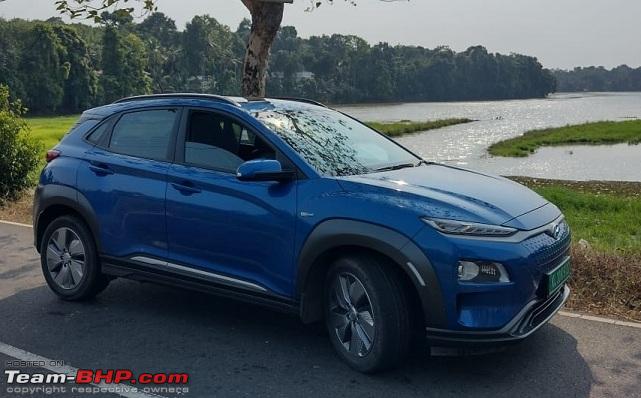
Inspite of all its shortcomings, the “Hyundai Kona” was more or less considered as one of the most mature & efficient EV’s to land on Indian shores. With an ARAI declared range of 452kms, it was one of the first true long range EV’s in 2019, even when Mahindra was fumbling around with 100 km range EV’s (hell, i could do that on a bicycle with far less planning).
Target:
Achieve the ARAI figure atleast on highway runs, without resorting to "extreme measure hypermilling" like switching off AC or the infotainment etc. But with the simple constraints of not risking safety or time for that matter.
While the EV owners were struggling to breach the ARAI marker, here I was trying any means, to achieve this on a regular basis.
And thus, started the saga of gamifying highway runs.
Result:
The realization that ARAI’s simulation parameters itself are quite inefficient, thanks to the included deceleration/braking was an encouraging thought.
452 km figure on single charge - Achieved, almost consistently on all solo highway trips
Next target 500kms - Yet to achieve consistently especially on long distance trips. Fatigue level of navigating “Indian Chaos”, on long runs, is a limiting factor.
Some recent numbers:
Chengannur Bangalore Round Trip – 461kms for 100% charge. Round trip Efficiency of 11.78km/KWh or 84.91Wh/km.
A 1,348 km Bangalore round trip. Except for the heavy traffic at Ernakulam & Bangalore, rest entire trip was on wide open roads, and total time taken was almost 25.5 hours. Being part of an extended trip, had to make a stop over to prevent sleep deprivation.
Solo with 2 cycles(extra wheelset), tools, backpack, tent and sleeping bag. The acceleration/deceleration was quite extensive, just to minimize the bouncing around of all the stuff.
Highway Driving 70%, City Driving 30%

Chengannur Thrissur+Shoranur Round Trip – 508kms for 100% charge. Round trip Efficiency of 12.98km/KWh or 77.03Wh/km.
A 514 km Shoranur round trip. Except for traffic at Thrissur and Ernakulam, rest all was highway followed by a bit of running around in Shoranur. Time taken almost 13 hours.
Could have hyper-miled, but did not want to take a risk. So did a last minute top up of 17% (loo break)and reached home with 16%.
Solo with a trekking backpack, tent and sleeping bag.

Chengannur Ernakulam Round Trip – 524kms for 100% charge(extrapolated). Round trip Efficiency of 13.38km/KWh or 74.75Wh/km.
Actually a 215 km Ernakulam round trip, Almost 5.25 hours thanks to infamous Ernakulam-Alapuzha stretch with it’s peak hour traffic & ongoing road works.
It was the evening peak traffic which was a loss both in terms of time & efficiency – 3 hours and a lowered efficiency of 13KM/KWh (76.93Wh/km)
Highway Driving 90%, City Driving 10%

Chengannur Ponmudi Round Trip – 480kms for 100% charge(extrapolated). Round trip Efficiency of 12.26km/KWh or 81.55Wh/km.
A 274 km round trip to Ponmudi in almost 7.5 hours including the Ponmudi Climb(slow with breaks just to enjoy the moments). There was a 45min charging stop, though unnecessary for this trip, it was again in done in anticipation of the drive next day. The actual drive time would be closer to maybe 6 hours.
Almost completely Highway Driving

Takeaway’s:
Defensive / Anticipatory Driving
The Staunchest of all the "Allies", any driver, looking to extend the range, can ever have.
It just helps to be a perfect hybrid of “The Strategist” and “The Optimizer” of Indian Roads.(Reference: https://www.team-bhp.com/forum/stree...ml#post5726826 (Humour: A guide to traffic in India))
There were no instances of emergency braking and even the use of brake pedal was almost rare or nil. The vehicle was more or less always slowed down by regen or coasting.
Braking is the arch nemesis of efficiency – All tactical measures like predictive slowing down, coasting to stop, regen level 1 braking and rolling stops, can go a long way in increasing the range. But again, at no time does it take any precedence over safety.
The best part is these measures with a defensive style of driving just makes it feel quite safer.
“Rate of acceleration” – A range killer just like its more infamous sibling, “High speed” - considered to be a true-blue-killer of range. The energy lost in the “quick launches off the start line” can sometimes match the energy required to hold a steady high speed.
Contrary to popular belief, city driving is equally punishable on EV just like an ICE. The only saving grace for an EV, over an ICE, being the “Regen” functionality. In most cases, the city traffic was where the efficiency was lost. The irregular flow, more time & effort taken for the same distance, higher AC cooling load – all these factors brings the numbers down.
Tactics not yet utilized but under consideration:
Drafting or Slipstreaming – This is a technique that inspite of its advantages, i am just not able to bring myself to adopt. The proximity to another vehicle just keeps me on an edge. I need a good 1-2 car length distance with the vehicle ahead, even if that means other vehicles trying to overtake & squeeze in front of me(as long as they don't throw me off the road).
Vehicle pre conditioning – In this technique the vehicle pre cools the cabin AC using the charger rather than the HV battery. While i have tried it once or twice and have found it to be quite effective, It technically is just a proxy means of range addition and not actually an efficiency improving method. Since at standstill the cooling system needs more energy, for heat dissipation, than when the vehicle is at speed on the highway.
Reflective half covers while at charging stops – This ongoing test is definitely quite promising and will be tested at the next long distance run. These half covers can just quickly be put up on the car like a blanket before initiating charging. It manages to keep the car at close to ambient temperature, reducing the heat load on the AC, when restarting after the stop. And the absolute relief of not stepping into a burning oven, is the incredible plus, makes it worth it, even if one is not bothered on efficiency.

Terrain based route mapping. The Google map’s routing does help in terms of shortest distance, traffic and road width/highways. But i think it completely overlooks terrain & elevation data. Basically it does not check if the route has a lot ups/downs and curves/bends.
Planning to do some mapping in future for the regular routes with rolling terrain, to see how much improvement this can bring about,
Any further trips & tricks from fellow Team BHPians are most welcome, No matter how quirky, I would be testing them and incorporating them, in my forever quest for efficiency.
On a closing note - How I still wish. Hyundai had released the Kona's facelift which had slightly better efficiency or the 64KWh Kona.
Check out BHPian comments for more insights and information.
News
Checked out the BYD Seal sedan: Can it potentially replace my MG ZS EV
It is definitely a terrific value for money car. I saw two walk-in customers placing their deposit.
BHPian speedmeister recently shared this with other enthusiasts
I had a look at the BYD Seal yesterday. I liked the presence and the looks of the car. I found the quality of materials used to be good.
Some observations:
- Both front seats get powered controls which helps in easy ingress. Seats are very comfortable.
- Rear seats are easier to get in and out as it's slightly raised due to battery positioning.
- Legroom is adequate and should not be a concern.
- I found the thigh support to be sufficient in the rear.
- Headroom will be an issue for taller passengers.
- There are no sunblinds, which is a miss.
- Ground clearance will be an issue, especially in Bangalore.
It is definitely a terrific value for money car. I saw two walk-in customers placing their deposit.
It has the features, looks, range and the lower running costs of an EV while offering all that one will look for in a luxury barge.
Service intervals are at 20000Kms which is a big relief for high mileage runners.
Delivery will start by end of this month.
The Premium variant is the most value for money at 48.5 on road in Bangalore while the Performance one is coming under 56.5L
The performance variant will be an overkill as it's capped at 180KMPH and reduces range, but will be a fun to drive car on open highways.
If I go ahead with this, this will replace my current ZS EV and will be my daily driver. Seal will be a great highway cruiser and with over 500+km of real world range even at 100+kmph speeds, range is a not a concern.
My major concern is the ground clearance and the sheer length of the car.
This will definitely increase my commute time as I cannot take the shortcuts that I usually take in my ZS. Also my office parking slot isn't that great and I do not want to use the valet service.
Test drive cars are not in yet and will take another week for test drives to start.
I have requested for a two test drives, one on my usual commute and other on the highway. I will take a final call after the test drive.
Price list for Bangalore is below.
If one gets insurance from outside, the premium variant will be about 47.5L on road and performance will be around 55L.

Standard warranty is 3yrs/125K Kms. There is no option of extended warranty at the moment, this may be introduced later. This is for the car, battery, motor and motor controller warranty is different.
Some pics I took yesterday:
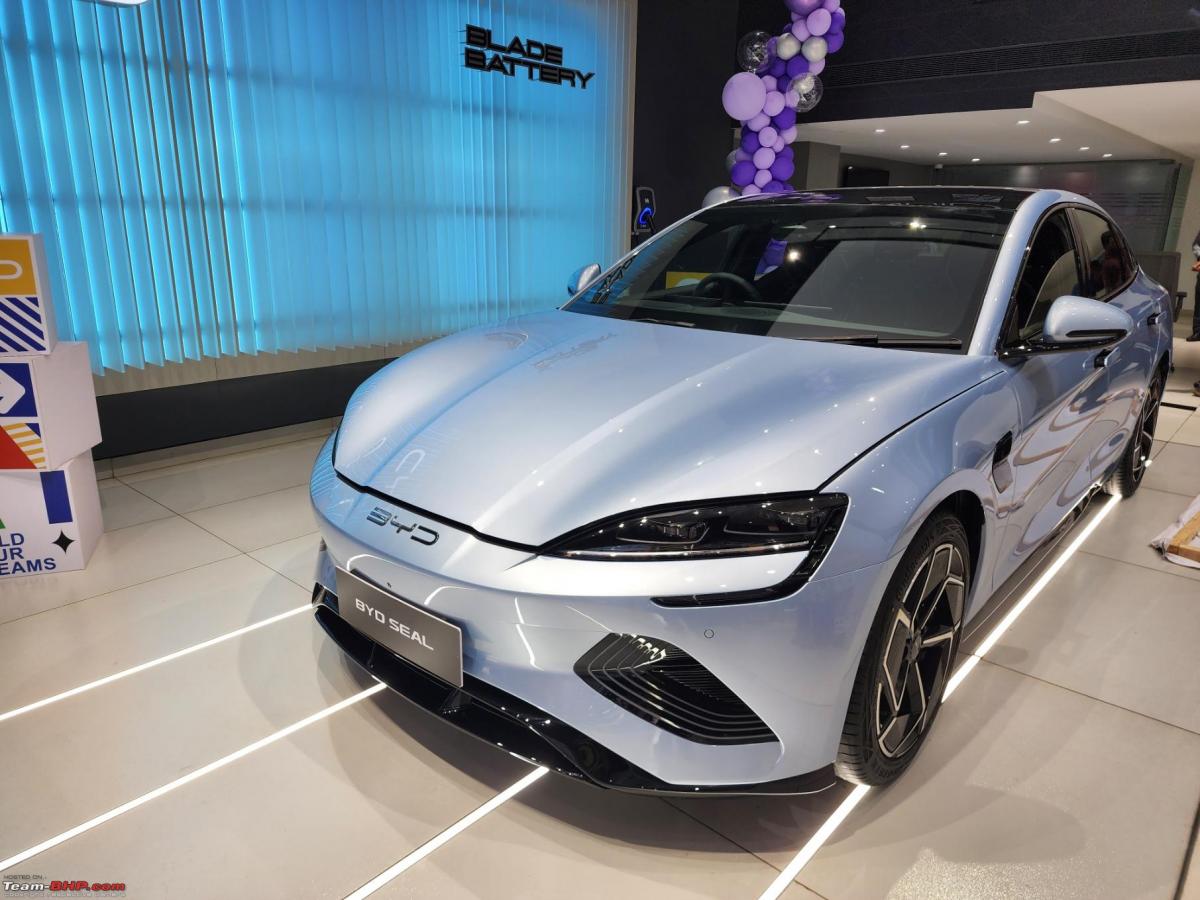
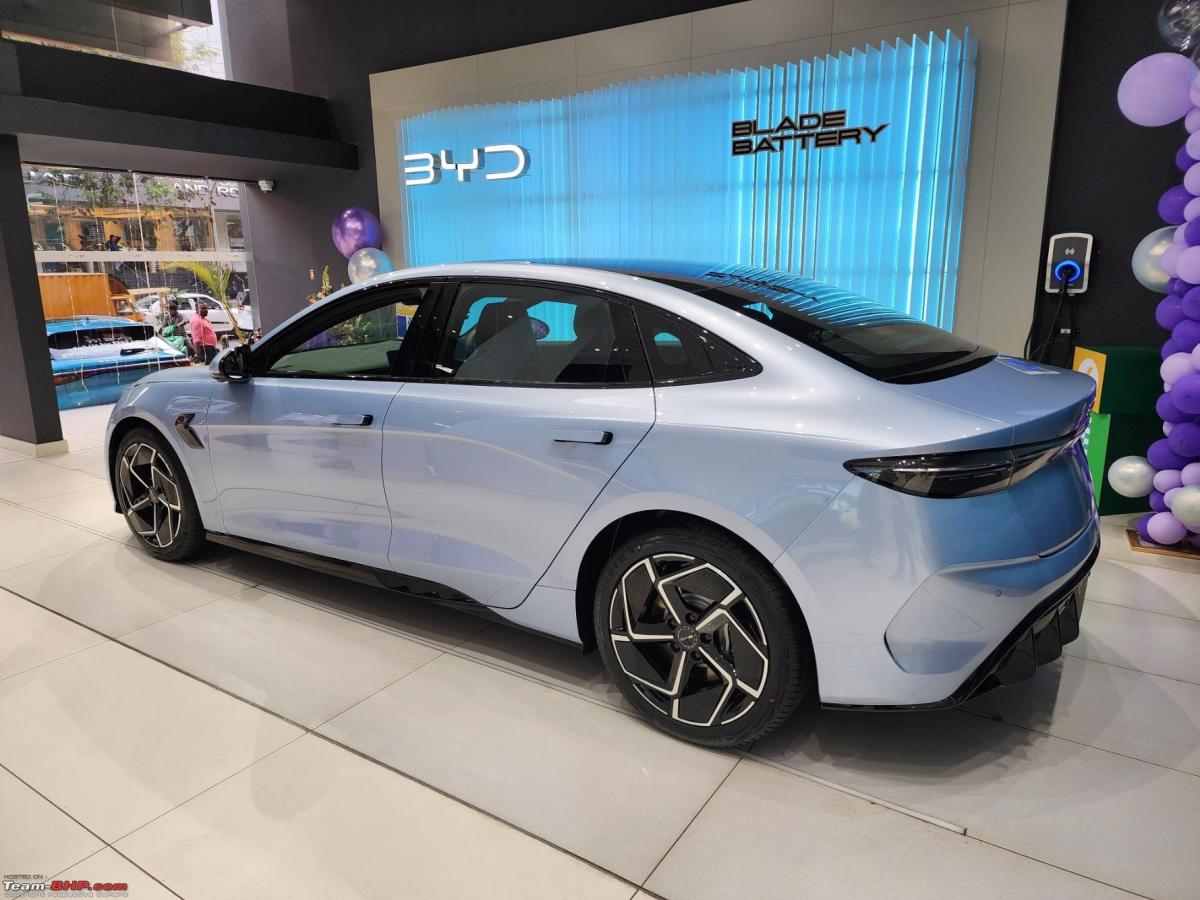


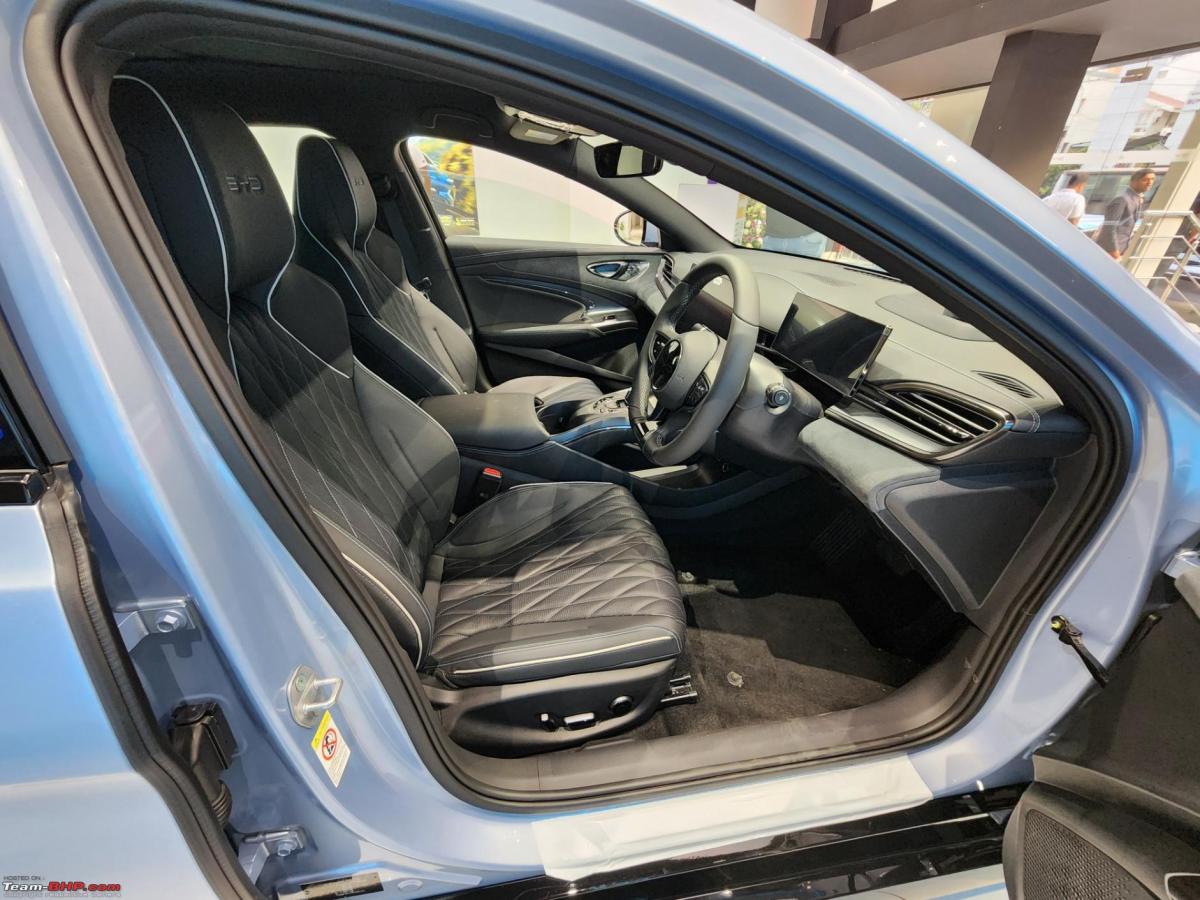
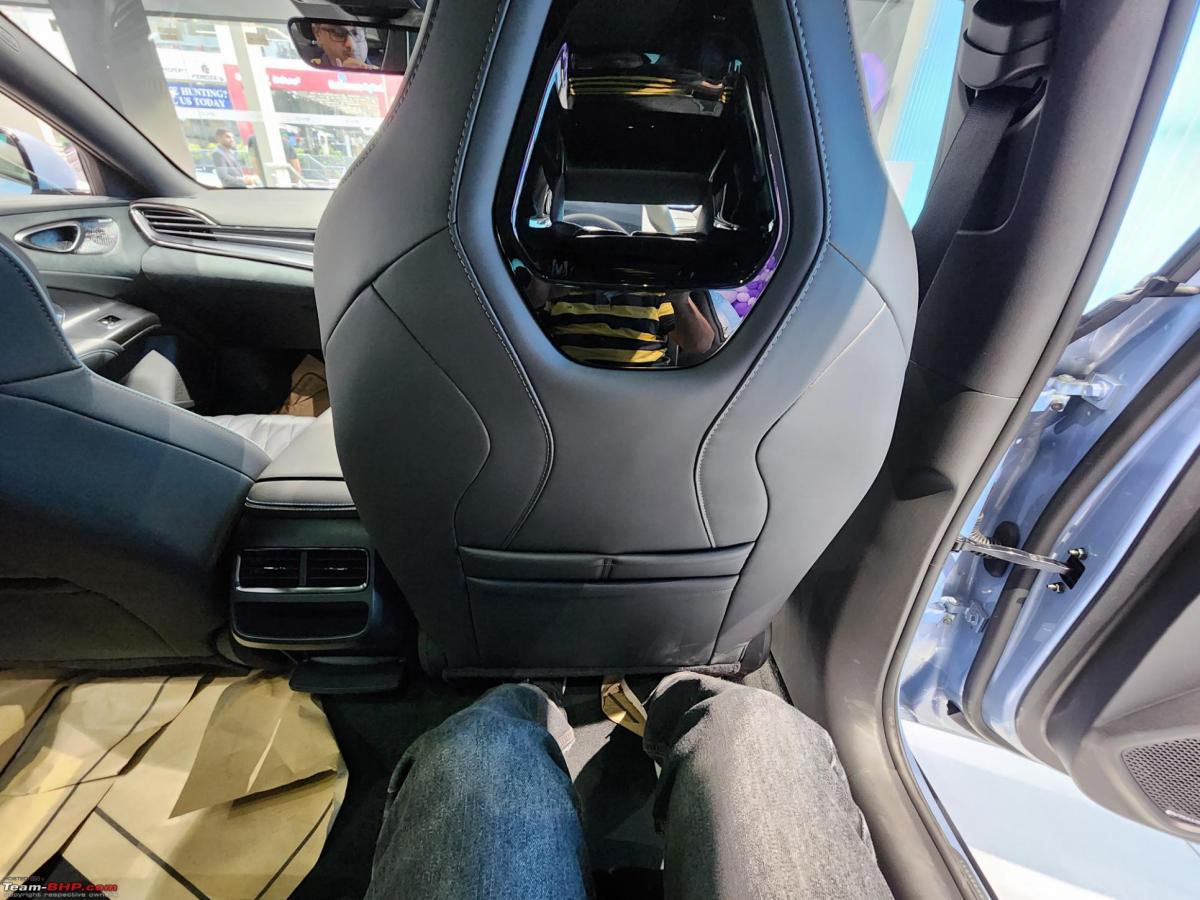

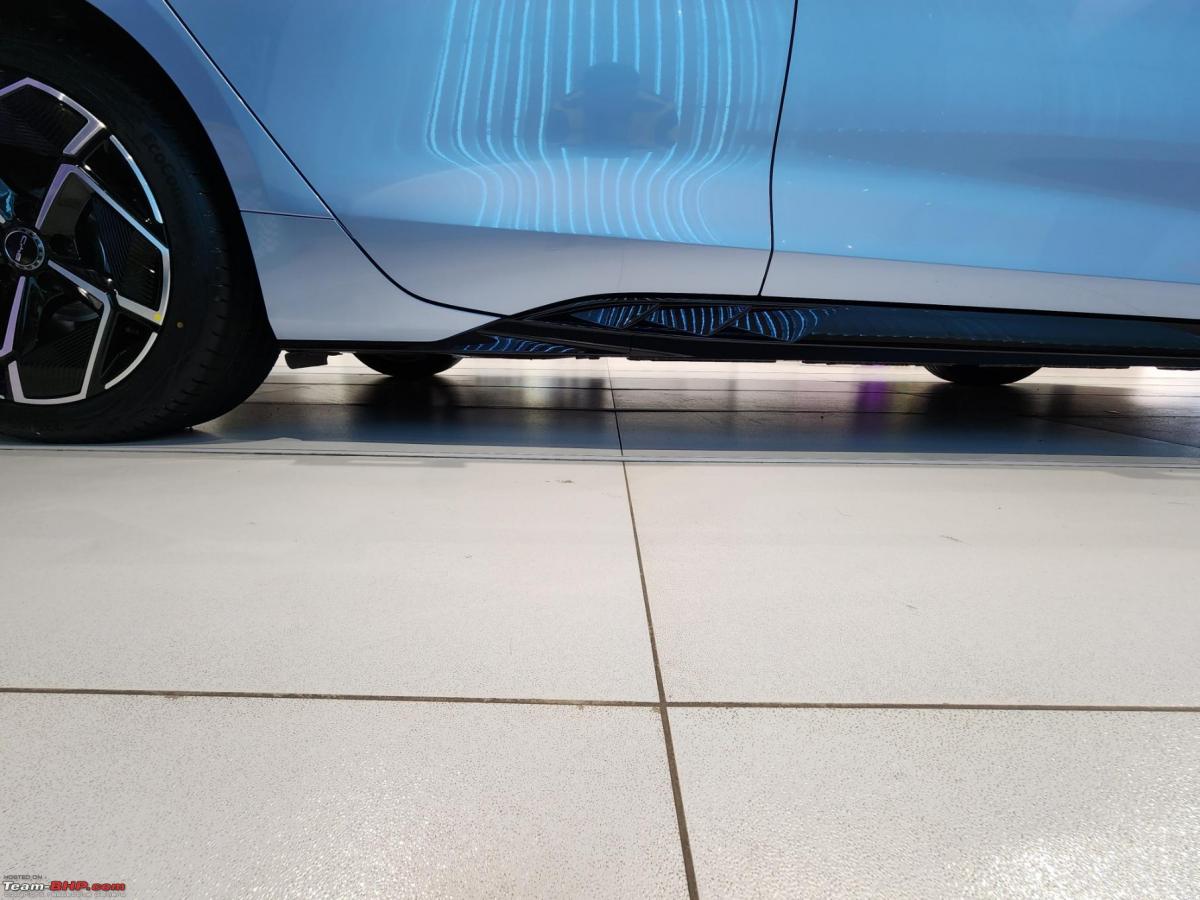
Check out BHPian comments for more insights and information.
News
Braking issues make multiple errors pop up on my 2023 Tata Nexon EV
Was not able to shift to neutral from drive after stopping, switched off the car and then it was not allowing shift to drive mode.
BHPian Venky03 recently shared this with other enthusiasts.
So BHPian 400notout had mentioned about errors popping up on his Nexon.EV recently. I faced the same issues yesterday:


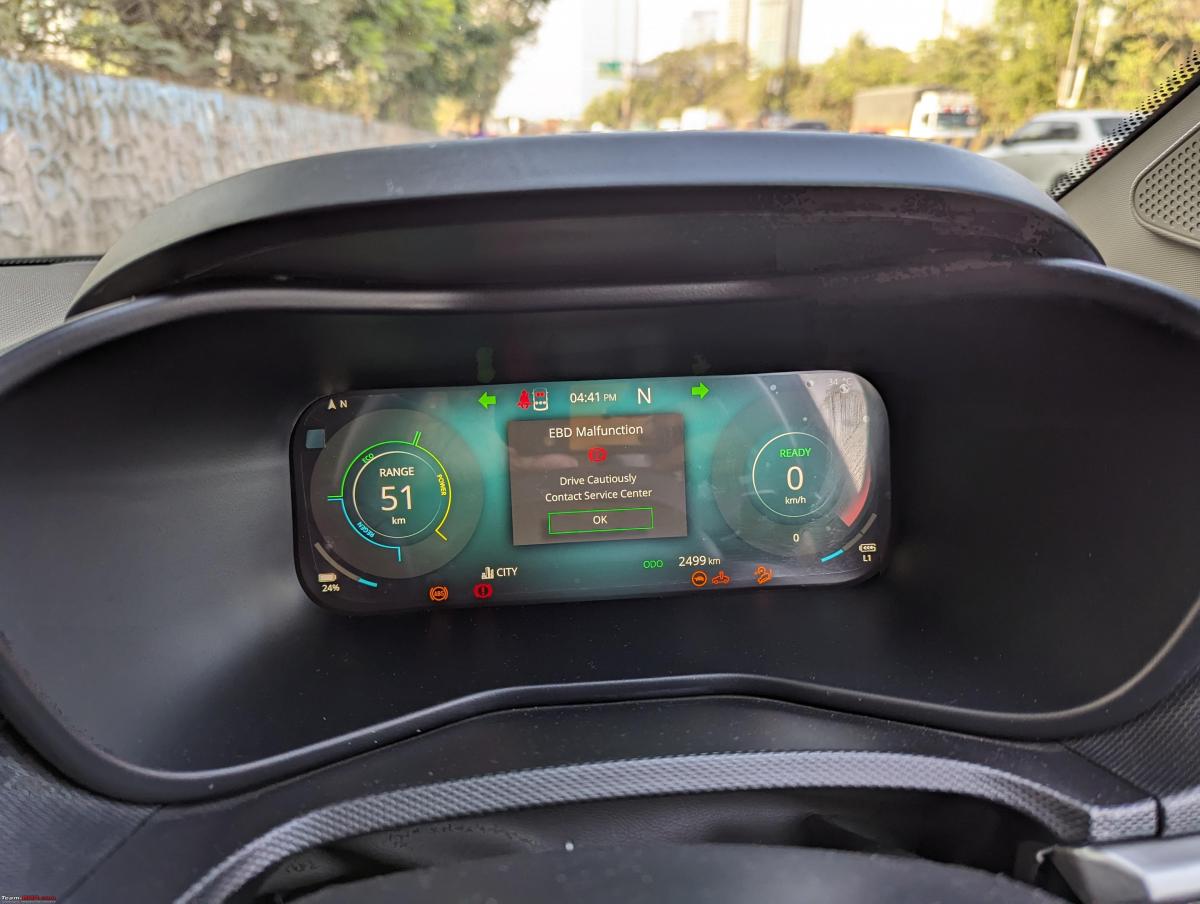



Error occured when I braked lightly before merging with main lane, you can hear me slamming the brakes to maintain distance with Wagonr in front. Tried increasing regen since brake pedal was hard, but regen stopped working after the error.
Was not able to shift to neutral from drive after stopping, switched off the car and then it was not allowing shift to drive mode. I had already travelled around 160kms, this error occurred just as I was about to reach home. Called Tata toll-free, they sent local technicians with 12V battery for jump start in 60 mins, even after mentioning that the car is on but not shifting to D. We also checked the IVBAC fuse as mentioned in that video but it was fine, so they asked me to call RSA. Flatbed arrived after 60 mins.

Waiting to hear from the SC.
Check out BHPian comments for more insights and information.
News
Serviced my Nexon EV at dedicated Tata EV service center: 5 highlights
The staff seemed knowledgeable about EVs as they work on EVs day in day out.
BHPian ferrarirules recently shared this with other enthusiasts.
As mentioned earlier that I will get my 22,500 service done at the dedicated EV service center. So here it goes:
Prologue: My car is about to get an year old in another 2 days. I have covered 22,500+ kms in an year. My first three service were done for at Multitech Motors, Faridabad, the service center caters for both EV and ICE vehicles. This service center is overloaded with vehicles like all other Tata service centers. So when the Tata.EV store + service center opened I had decided to get my next service done there.
Service booking process: Tata provides "EV TMSC" app for all your service needs. I tried booking my appointment using the app but the dedicated EV service centre doesn't show up on the app as of yet. So I called the service center and they helped me in scheduling the service for Monday - 10:00 AM.
Service Experience:
I got late leaving from home so I reached the service center at 11 AM. Parked the car in the waiting area and walked up to the reception

I was greeted by the receptionist on entry and guided to my service advisor - Amit. The reception was refreshingly designed with ample sitting spaces.
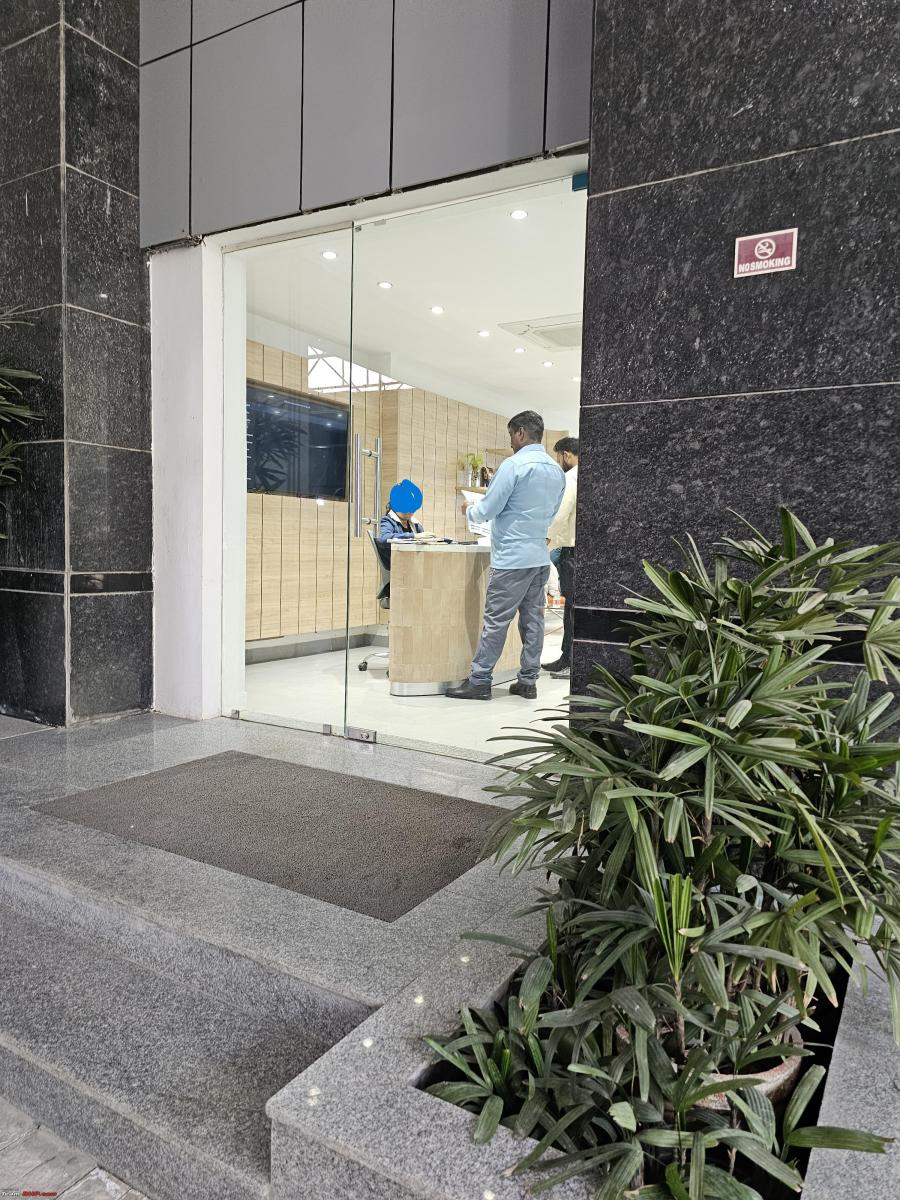

As the service was a minor service (I really feel Tata should do away with these services), there was not much to do other than normal checks. There was one noise coming from the left front of the car so I asked them to check the same.
After the job card was opened, the car was moved to the mechanical bay (one of the 9 lifts available) for service
View of the workshop standing at the entrance.

Car being checked:

After the checks were completed, the root cause of left side noise was identified to faulty B mount. As the part was not available, it was ordered. After that the car was moved to washing area in the back. They have an automated wash facility.
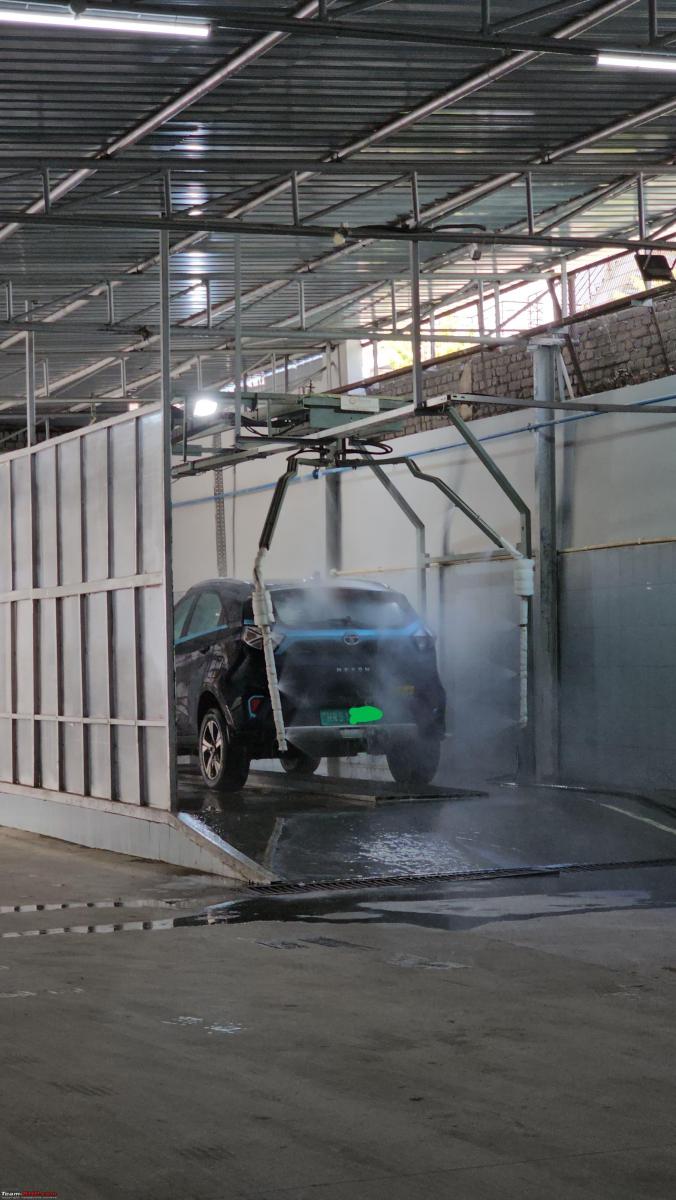
Overall experience:
The experience was refreshing and a much needed change. The differences I found from ICE+EV combined service centers are as follows:
- The staff seemed knowledgeable about EVs as they work on EVs day in day out.
- No overburdened staff. Number of EVs sold are not high yet so work load is not out of the roof
- No exhaust fumes filling up the enclosed workshop.
- Overall workshop is cleaner as there are no major oil changes happening. EVs only have transmission oil changes.
- Service Manager - Mr. Arvind also came up to me just for a general chat and inquired for feedback on the overall experience.
Summary: End to End EV ecosystem is what is needed today to elevate EV ownership experience to the next level. As Tata has the numbers, Tata should open these dedicated EV showrooms + service centers in all major cities like Mumbai, Pune, Bangalore, Hyderabad, Chennai and Kolkata.
Some pics of services that I didn't use
Bodyshop area:

Wheel alignment and balancing machine:

Check out BHPian comments for more insights and information.
- Tags:
- Indian
- Tata Nexon EV
- Service
- EV
- EV charging
News
Chinese EV minivan charges from 10-80% in under 11 minutes
The Li Auto Mega is a 5.3-metre-long minivan with a 2+2+3 seating configuration.
According to media reports, Chinese premium EV maker, Li Auto's Mega minivan is said to be capable of charging from 10% to 80% in just 10 minutes 36 seconds. Li Auto officially mentions that the EV minivan can add 500 km in 12 minutes, thanks to the fast-charging capabilities of its 5C Qilin battery from CATL which offers a peak power of 521.2 kW.
The charging capabilities of the Li Auto Mega can be seen in a video, which starts with the minivan having 10% SoC and 68 km of range. With peak power at 521.2 kW, the minivan ends its charge at 80% SoC in just a little over 10 minutes and a range of 568 km.
Reports also suggested that Li Auto do not want to ruin the charging experience for its customers. Hence, instead of relying on third-party infrastructure, the company has decided to build its own network of superchargers. The company plans to have 2,000 superchargers across China by year's end, and 10,000 superchargers by the end of 2025.
The Li Auto stations will have a 3+1 setup - three 250 kW chargers and one 480 kW charger. The company also assured customers that if the station is empty, cars with the 5C charging can add 500 km in 11 minutes. However, if the station is occupied with all chargers in use, 5C charging vehicles will still be able to add 500 km in 15 minutes.
The Li Auto Mega is a 5.3-metre-long minivan with a 2+2+3 seating configuration. It is powered by two electric motors together producing 400 kW (536 BHP). It is powered by a 102.7 kWh battery pack from CATL, offering a max range of 710 km.
Source: NewCarsChina
- Tags:
- Indian
- International
- EV charging
News
Drove my Ioniq 5 to the hills: Real world range after a 300 km trip
Excellent ride quality, no body roll, powerful performance with great handling on curvy roads.
BHPian Mallu recently shared this with other enthusiasts
I got my Ioniq 5 delivered on February 10 , from Hyundai franchisee Popular Hyundai, Ernakulam, after two weeks of making full payment to HMIL. I received 1.5 lakh discount applied for 2023 model and it took only a total of 3 weeks after booking. The delivery experience was good overall, even though the salesman missed explaining the menu controls and functions completely. I am still figuring out how to use some of the features like adaptive cruise control, since the control buttons placed in steering wheel seems not easily read. It may take several weeks of usage and need to sit with the user manual to understand its operations. It would be easily grasped if the salesman could brief all the operations while delivery. I got the vehicle delivery with odometer reading of 20 km, and I am still under 1000 km of usage.
The purchase status in Hyundai "cllicktobuy" portal is not getting updated on time which made me confused many times, and needed to call the company sales rep several times, including to see whether the payment is received or not. it is interesting to see that even after two weeks of getting delivery, the website shows the vehicle is not yet started transit from Chennai depot as of today!.
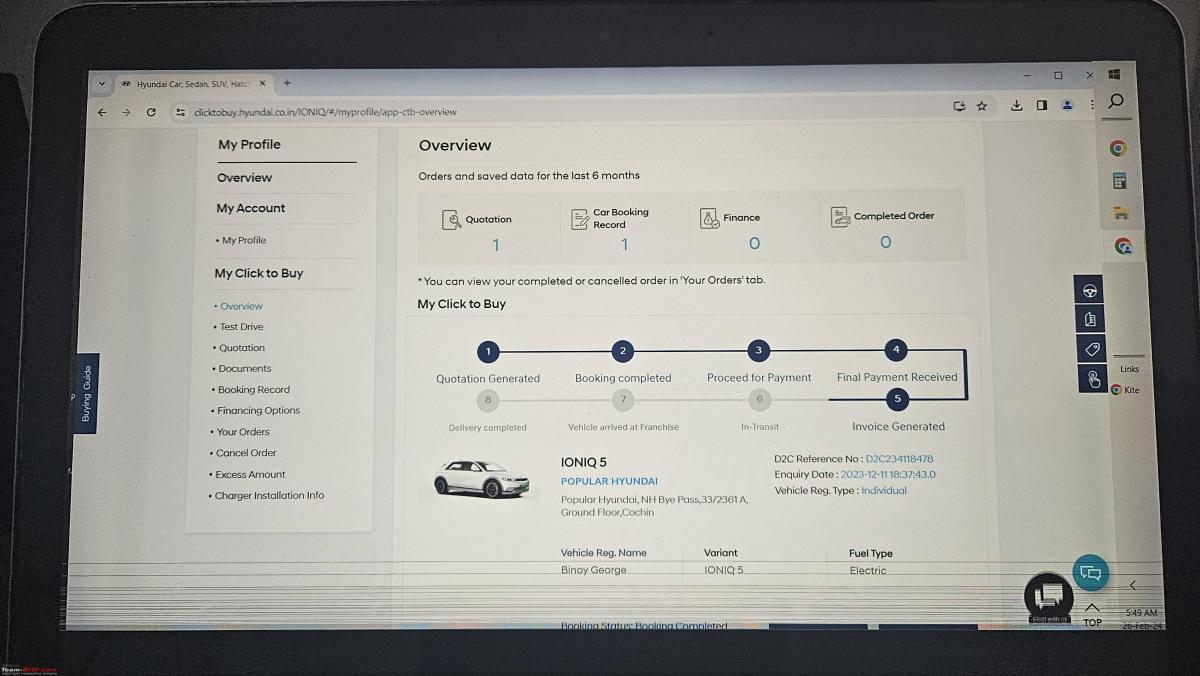
First trip to hills to check range:
I decided to check the real world range in Hi ranges of Kerala by taking a journey from Thodupuzha to Kanthalloor for a two day round trip of 300 km. I started from home at Thodupuzha with 100% charge using my 11KW charger which runs on 6KW solar plant. I reached my resort on a hill top in Kanthalloor after passing scenic tea plantations of Munnar, and Marayoor with 58% charge left, 151 km journey and estimated 298 km left to drive. A few kilometers of road to the resort was very bad and was like a mild off-road with heavy gutters which increased by heart beat and finally reached the hilltop without any underbody hits or body scratches.
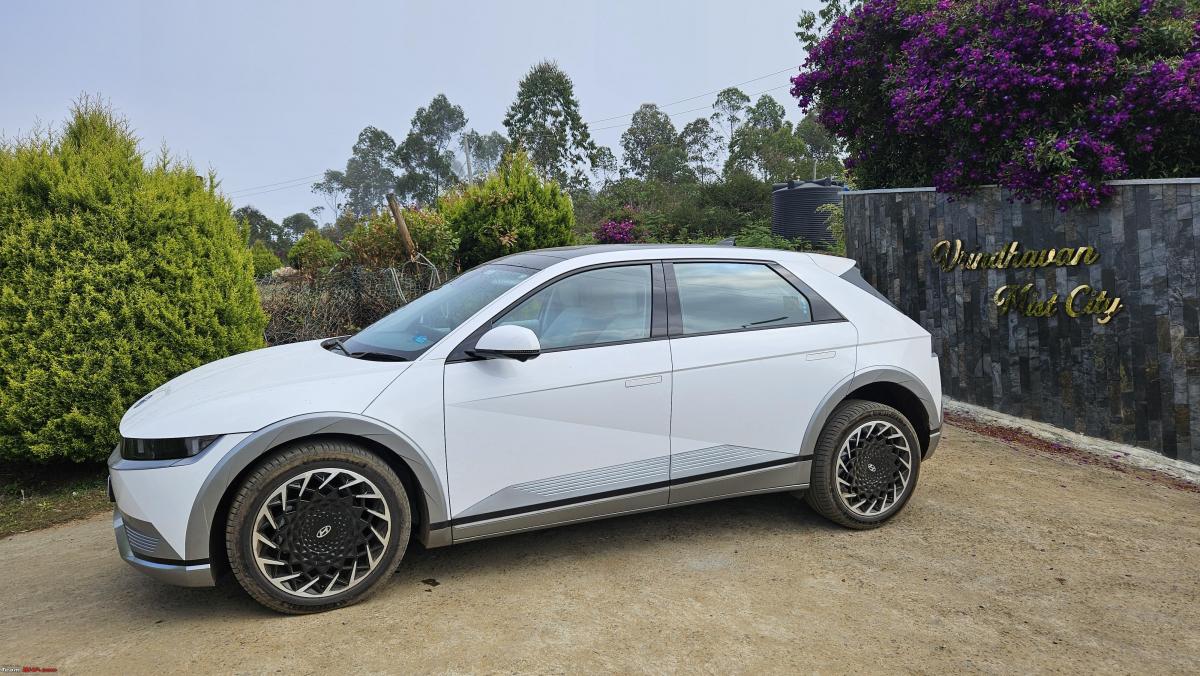
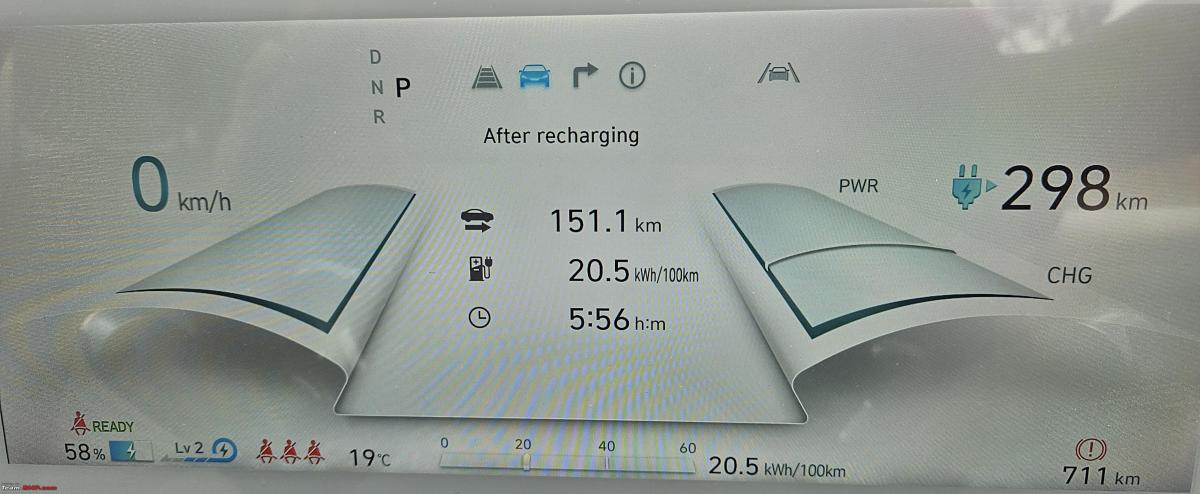
The next day started to descend the hills and it took about 4 hours to get back to home at Thodupuzha with 41% charge left and estimated 196 km left to drive which is great and there is no scope of range anxiety. While downhills, I used regeneration level 3 and turned off AC for a total of about one hour in round trip during chilly tea plantations of Munnar.
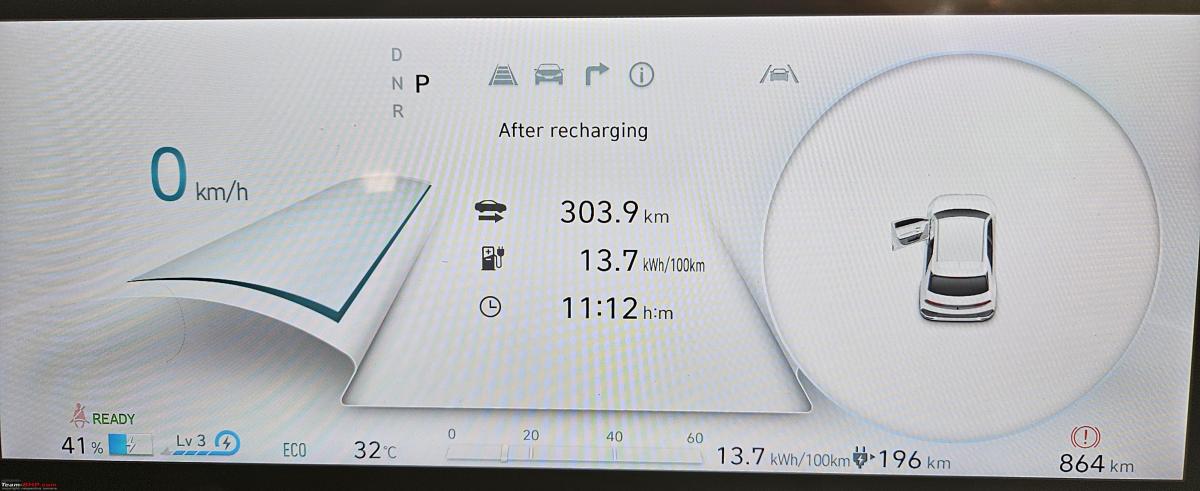
Likes:
- Excellent ride quality, no body roll, powerful performance with great handling on curvy roads.
- Around 500 km of real world range which is excellent.
Dislikes:
- The AC vents in rear seems less effective and not enough cooling for rear passengers.
- It would be nice if the windshield and window glasses were heat resistant solar glass as seen in Kia EV6. The glasses get very hot in sunny days.
Check out BHPian comments for more insights and information.
News
Reasons to buy or not to buy an EV in 2024: Enthusiasts speak out
The initial purchase cost of EVs is still high compared to IC engine cars. However, as EVs are becoming more popular, the gap is reducing.
BHPian Omkar recently shared this with other enthusiasts.
EVs have seen wide acceptance in India over the past few years from the people as well as the government. Nirmala Sitharaman, Minister of Finance & Corporate Affairs in her interim budget speech stated that the government will strengthen and expand the EV ecosystem from manufacturing to charging infrastructure (Source). The number of electric vehicles in metro cities is on the rise and we regularly see news from manufacturers hitting new sales records with their EVs.

Things aren’t all rosy though. The global EV market is also changing, and we’ve seen the graph flatten. There have been reports stating that EV sales could decline globally this year. Some automakers have even gone on to say that “EVs aren’t working” (Source). India specifically is still in the growth stage, but there are still some challenges.
High initial purchase cost:
The initial purchase cost of EVs is still high compared to IC engine cars. However, as EVs are becoming more popular, the gap is reducing. Also, most importantly, with battery cell prices having softened in the recent past, manufacturers like MG and Tata have extended the benefits to the customers by reducing the prices of their cars.

Rapid development:
The kind of development we've seen in just 4-5 years is incredible in the EV space. Just see how much the Tata Nexon EV has developed since its launch in 2020. Not only that, we're constantly seeing more development in EV technology internationally. So, it's bound for some people to think that they'd rather wait for the next-gen EVs that would make the current lot of EVs obsolete.
Battery range:
As is the case with technology, we’ve seen improvements in battery technology and packaging. The real-world range for most cars is now ~300 km which is good enough for city use and the occasional highway trip. And while that may be enough for some people, people who love doing very long trips, the ~300 km range might not be enough.

Improvement in the charging infrastructure:
We’ve seen BHPians do 1,500-2,000 km road trips in EVs taking full advantage of the improved charging infrastructure. However, there have been cases where the charging station wasn't working or completely occupied, which left the travellers stranded. The charging infrastructure is still improving and is much better than it was a few years back.

Lack of options:
We have been seeing a lot of EV launches, but the options are still limited. However, this might not be the case for long as manufacturers are planning on introducing a lot more cars in different segments. Maruti Suzuki will be introducing the eVX this year and Tata also has a bunch of EVs lined up. All in all, this year and next we will see a lot of EVs being launched in the Indian market.

Uncertainty regarding battery life and repair costs after 5-7 years
This is a factor that hasn’t changed much. Some manufacturers like MG have buyback options after ownership of 3 years or so. However, doubts over long-term ownership still prevail among car buyers.

Of course, there are more case-specific reasons like the unavailability of parking space for the installation of a home charger, long charging times compared to IC engines, safety concerns, etc. These reasons aside, there are a lot of benefits as well for you to buy an EV. The real question is, has your perception towards EVs changed from what it was a few years back? Would you buy an EV today? If not, why would you not buy an EV?
Here's what GTO had to say on the matter:
I voted for "need more options", "love my petrol & diesel cars" and "other".
Do note that I absolutely love the current breed of EVs. But I'm waiting for more fast EVs to come, like the EV6 & BYD Seal. Am also waiting for big EV SUVs as we're starting to feel the need for a large family SUV (like the stunning Kia EV9).
But even then, it'll be a tough pick between EV & ICE. As an example, I'd be pretty darn confused shopping between a Kia EV9 and a pre-worshipped GLS, X5 / X7 or Cayenne.
Here's what BHPian Samba had to say on the matter:
There are times I cover 1000+ km in a day. I visit remote places where electricity is not stable. There are days local home-stays use generator for electricity. Last time when I was at Kaza in January, there was no electricity for the whole three days I was there. Local petrol bunk dispensed fuel manually.
With my type of usage, at most I can consider a strong Hybrid, but not an EV as my primary car.
Being said the above, I won't mind an EV like the Comet or the Tiago for my local city usage. Small foot print, automatic transmission, fun to drive, low running cost with an on-road price of less than 10L should be good!
Here's what BHPian vattyboy had to say on the matter:
Cars 24 guys in my city told me that they don't buy EVs when I got my Compass evaluated by them recently, they told me that there is very little demand for EVs in the used car market, which means the resale value of EVs is low and on top of that there is the uncertainty of battery life, reliability and repair costs in the long term.
Also, if I buy an EV then I will pay a couple of lakhs more than its ICE counterpart. Okay, additional money spent I will recover in a couple of years but again down the line I will get low resale value and in that, I will lose some money. So overall money spent will equal out with its ICE counterpart.
But yes if the person loves Crazy acceleration and contributes to saving Environmental pollution then EVs are the best bet
Here's what BHPian Axe77 had to say on the matter:
On the topic at hand, I’m simply not convinced about EVs yet. At this point, battery tech continues to evolve far too quickly and I fear that it will be a depreciation disaster whatever EV one buys today.
My sense at this point too is that even if I buy a car 3 - 4 years from now, I will likely veer to a strong hybrid or turbo petrol more than an EV. If I do buy an EV, it will likely have to be at such a price point where I don’t mind owning it for 5 - 8 years and at the end of that period, mentally I should be willing to write off the entire purchase amount (i.e. get whatever I get at the end of it, which could even be zero). I doubt I’d want to buy one unless it has a minimum real world range of 500 kms and comes within a 25L price point (if I’m to be willing to write it off completely).
Simply put and as an example, if I had to plonk cash on a second car today, I think I’d much rather buy a Camry / Hycross strong hybrid as a 10 - 15 year purchase rather than an MG ZS EV / Ioniq EV as a 6 - 8 year purchase. Of course the sophistication and performance of the EVs will continue to play on the mind but the ownership longevity and practicality of the strong hybrid will be the counter pull.
Here's what BHPian Rajeevraj had to say on the matter:
Pretty much checked all options. They are still expensive, choices are limited, range for me is a concern. I even like to avoid filling petrol in the middle of a trip. My Vento with its close to 60 liter tank capacity takes me 500+ km easily before I need to refuel. I would like to see EVs comfortably hit that range while driving at allowed speed limits.
Home charging infra is still a problem especially in apartments with the rules and approach not stabilized yet. While on road charging infra is expanding rapidly, it is still limited and with the charging speeds of EVs, my sense is that it will become a bottleneck as EV adoption scales.
Keeping all that aside. One major niche reason for me. Where are EV Sedans? My first choice is always a sedan. There seems to be one fantastic but expensive option coming which is the BYD Seal which seems to address 2-3 of the key concerns.
I would also prefer a plug in hybrid which would give the best of both worlds. Not sure why there is not enough focus on that.
Finally all this is assuming a single car garage. If it is a 2nd City run about, one can compromise on some of these issues.
Check out BHPian comments for more insights and information.
- Tags:
- Indian
- EV
- electric cars
- EV charging
News
Grinding noise in my Ola S1 Air: Hub motor replaced in warranty
I also noted that setting regen to higher levels increased the noise, but turning off regen didn't make the noise go away.
BHPian vivekgk recently shared this with other enthusiasts.
Hi Everyone,
Sorry I was unable to provide regular updates on my Ola S1 Air situation. As I last mentioned, the scooter was at the ASC, and I was not getting proper update from them. I was following up with the Customer care every day, and they kept insisting that I would get an update from the ASC. the only way I could get in touch with the ASC was if I were to go there in person.
As I was busy at work even on holidays, I was only able to try and go to the ASC after work. To their credit, when I went there once at 8 pm, they were still open! I had a discussion with their manager, and he said that they had finally got the battery shipped in, and they were just waiting for the approval from the head office to replace the battery. he assured me that the scooter would be delivered in 3-4 days time. I left with slightly lifted spirits.
However, it was another full week before they replaced the battery, and they didn't even inform me. It was only during one of my now "routine" daily calls that they said, yes, the battery has been replaced a couple of days ago, you can pick up the scooter, sorry for not informing you.
I had seen on the app that the battery was suddenly showing 50% charge from 0, and then showed that it was being charged, but I didn't know what to make of it, and they were not answering my calls regularly either.
So finally, after almost a month at the ASC, I picked up the scooter on the 22nd of December, 2023. (It was picked up by the RSA team and delivered to the ASC on 23rd November, 2023, about a week after it had broke down)
I asked about the receipt for the repair, and they said there was no receipt for warranty replacements as there was no bill to be paid. The entire issue was erased from the Ola Electric app's service history as well, as if it had never occurred at all. The scooter had about 94% charge when delivered back.
On the way home, I felt that the motor felt slightly rough while accelerating. Looking back, I should have gone right back and reported the issue then and there, but I was just tired of it all, and I decided to let it go, since it was a minor niggle. Boy was I ever wrong!!!
I took the scooter to work that day itself, and the day after that as well. The scooter seemed OK, and it was accelerating well in all modes. Ola's regen doesn't work when the battery is above a certain level, but after the charge level dropped a bit it started working too. However, in slow traffic, I felt that the roughness was increasing and the motor was feeling strained. After I reached home, I decided to pinpoint exactly at what speed the harshness was felt. After trying at various speeds, I concluded that the grinding was at its harshest at 10-12 kph, and disappeared at 20kph. One worrying thing was that the battery seemed to be draining quite badly, dropping to 50% from 90% after just 2 days, driving less than 20 kms. I recorded a couple of videos of the noise for sending to the service guys.
I also noted that setting regen to higher levels increased the noise, but turning off regen didn't make the noise go away. I parked it safely in the garage and initiated another RSA. Somehow, this RSA request got assigned their Coimbatore service centre in Tamilnadu some 400 kms away, despite me providing the accurate location on the map, and I kept getting calls from them asking about my location. I called up the service centre and explained the situation to them.
As usual, they played the same game of assuring 1me that the vehicle would be inspected and picked up, but nothing happened for a couple of weeks. Then on the 3rd of January, someone came to my home and had a look at the scooter. By then the battery had dropped to 15% from just sitting idle. They connected the charger, said they would pick up the scooter later that day, and I never heard from them again.
Finally on 4th January 2024, I got fed up and took the vehicle to the ASC yet again. They were reluctant to take it in and asked me to come after 2 weeks!!! After about an hour and a half of badgering, they finally entered it in the register. But they still wouldn't even take it inside to the yard, saying that it would be fine on the roadside where I had parked it, right in the baking sun. I finally cajoled a security guard to open up their makeshift barricade and push my scooter into the yard. The yard was full to the brim, and I counted about 130 scooters, a lot of them 2nd Gen.
While I was there, I spoke to several owners, 2 of them were 2nd Gen S1 Pro owners. Both were having issues with severe air leaks from the alloys and tyres. Apparently the tyres were not seated well on the alloy wheels causing tyres to become deflated in a couple of days. Another S1 Pro Gen2 owner said his scooter stopped responding to throttle while he was riding, and had to be towed here. It had been there for 2 weeks, and he was understandably furious.
As soon as I got home, I raised a complaint on the National Consumer Helpline. In the past couple of days, I have been contacted by several executives from Ola Head Office and from their Kerala Service head. I think that the attention that Team-BHP brought to my trials and tribulations has certainly had an effect.
I contacted the service centre yet again today, and they said that they were beginning the repair process, whatever that means. I also got a message on my phone saying that repair had been initiated on my scooter.
At this point, I am completely devastated that my ownership experience with my first EV has come to this. No matter how this turns out, I thank you, Team-BHP and fellow BHPians for the support given to me, and I once again implore prospective EV buyers to stay away from Ola brand. They only have marketing and sales in their mind, and care very little for buyers once they have got your money.
Thank God I didn't use the scrapping policy and scrap my 15 year old Mahindra Flyte, because otherwise I'd be totally stranded. Guess the ICE age isn't quite over yet, thanks to totally incompetent players like Ola.
Update:
On 13th January evening, I received a call from Ola service informing me that the scooter had been repaired and was now ready for pickup. I asked them if it was possible to deliver it home (0.5 kms away) as I was down with a fever, but they politely said that they did not have the staff for it at the time, as it was a weekend. My father drove me to the workshop and we picked up the scooter with minimal formalities, only having to sign a register. The scooter was already placed outside in the pickup area, and I could immediately see that the hub motor looked brand new, compared to the rest of the scooter which was dusty and rather dirty.
My daughter who had accompanied us was very excited to see me on the scooter, and immediately ran over and claimed her place on the footboard. She loves this scooter, I think it's the bright colour and the silent running.
As soon as I started off, I noticed that even in the Normal mode, there was a big improvement in the torque. As with all hub motors there is a small jerk while starting off, and the response is immediate. It definitely felt gutsier on the move as well. The vibration and the grinding noises were completely gone. The scooter felt as it had on Day 1. I had actually forgotten what it was like as it had been so long, and I was using my Flyte in between.
I have not had the time to fully test it as I was down with fever this weekend but I plan to do a full test drive in the upcoming days and see if there's any issue. The reason this vibration bothered me so much was that when my daughter is standing on the footboard, I rarely go over 20 kph, preferring to go at this "snail's pace" for safety reasons, as well as for her to enjoy the ride better without too much wind on her face.
As for me, I was originally planning to go ahead with my case and get a refund from Ola for the scooter, but realistically, it is not always possible. Hopefully, there won't be any more issues, but if I do, I will have you guys on my side to support me.
On a side note, I have decided to restore my 15 year old Mahindra Flyte. It is still one of the peppiest ICE scooters I've driven, and the best part is that it is a sleeper. It does not even try to look purposeful, but anyone who has ridden it will know what I am talking about. Mine needs some cosmetic surgery and some TLC, but if the government allows, I'll be keeping it for the foreseeable future.
Check out BHPian comments for more insights and information.
Pages



